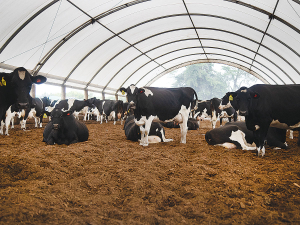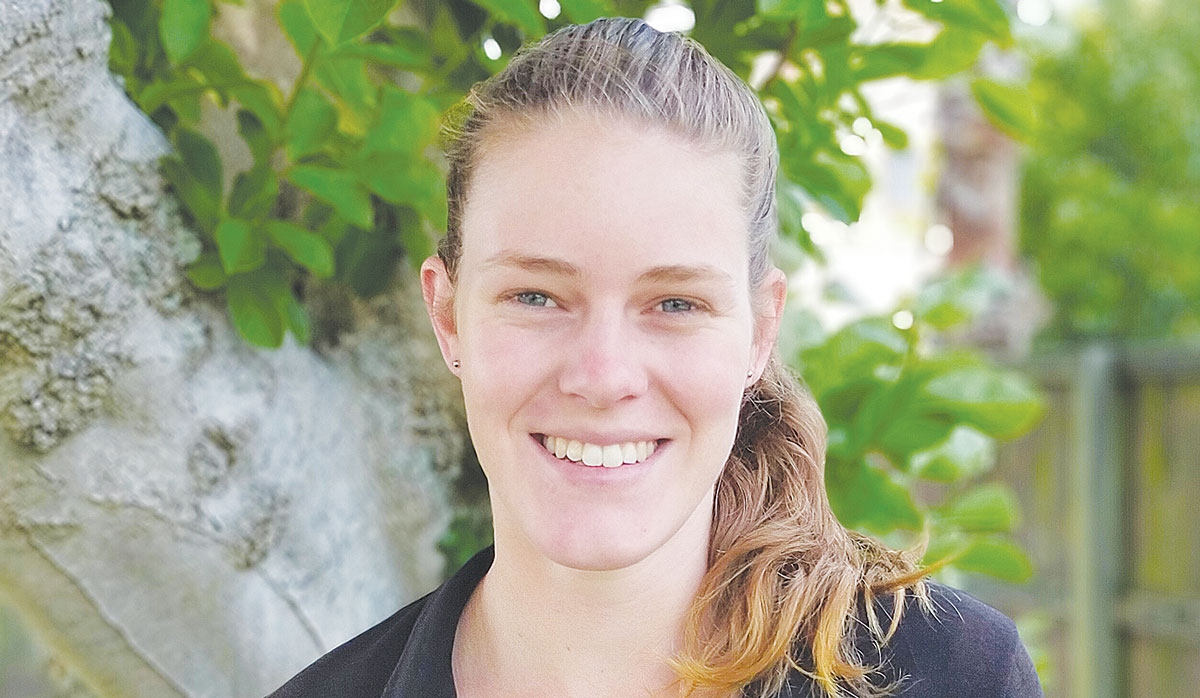Perrin Ag welcomes new consultant Alyssa Brazendale
Agri advisor Perrin Ag says its graduate recruitment programme continues to bring new talent into the agricultural sector.
 There is a general trend of utilising the shelter at nights during the cooler autumn and winter months and using the shelter during the day in the warmer months.
There is a general trend of utilising the shelter at nights during the cooler autumn and winter months and using the shelter during the day in the warmer months.
A new study has found that dairy farmer investment in composting shelters is being driven largely by a desire to tackle environmental challenges, improve animal welfare, provide labour efficiencies and better working conditions for staff.
The project, Whole systems impact of composting shelters in New Zealand, was led by Perrin Ag consultant Rachel Durie. She had support and input from Keith Woodford of AgriFood Systems Ltd, and contribution from a Māori-owned agribusiness who provided their farm as the case study. It was funded through the Our Land and Water National Science Challenge under the Rural Professionals Fund 2021.
The study reports on the knowledge and experience of six farmers (Waikato, Canterbury, Hawke’s Bay, Otago and Southland) already using composting shelters within New Zealand. It also quantifies potential impacts to farm systems on the Māori-owned case study dairy farm in the South Waikato.
Durie says while widespread in the Northern Hemisphere, composting shelters are a relatively new concept in New Zealand.
“Composting structures are already in operation in New Zealand on some early-adopter farms. In most cases, the shelters are incorporated into the system year-round in a hybrid indoor-outdoor grazing system. In this system, cows will spend a portion of the day in the shelter and a portion outdoors on pasture.
“The proportion of time cows spend in the shelter will vary depending on the individual farm system and the desired outcomes. However, there is a general trend of utilising the shelter at nights during the cooler autumn and winter months and using the shelter during the day in the warmer months.
“There are some farms using the shelter solely as an alternative wintering system to grazed crops. This is particularly the case in the South Island where winters can pose considerable environmental and animal welfare challenges.”
Intangible benefits a big drawcard
While all farmers interviewed as part of the study reported improved financial performance, it was the intangible benefits of composting shelters they weighted most highly.
“Labour shortages, environmental performance and animal welfare considerations are all significant challenges that dairy farmers are grappling with on a daily basis,” says Durie.
“The farmers we interviewed saw increased cow comfort and welfare, better staff working conditions, a lift in labour efficiency, improved environmental performance, and reduced pasture damage as real drivers for their investment.
“They noted benefits to animal welfare through the provision of a comfortable environment that protected cows from both the heat in summer and cold, wet conditions in winter.
“For staff, the shelters mean they can work out of the weather, which is particularly beneficial during calving. Where the shelters replaced winter grazing, there was a significant workload reduction. The ability to manage over-grazing and pugging damage also reduced farmer stress.”
Other farmers noted a reduction in calf mortality and a pleasurable experience for staff and animals over the calving period. One farm has even installed cameras to allow staff to complete night calving checks remotely.
In addition to these intangible benefits, the farmers reported a significant reduction in their winter feed requirements compared to a 24/7 outdoor system, due both to reduced maintenance requirements and feed wastage. One farm noted a 50% drop in the winter feed allocation relative to their previous winter cropping system.
Case Study Farm Key Findings
Modelling of composting shelters on the South Waikato case study farm demonstrated several key financial benefits for the business:
- 45% reduction in nitrogen leaching loss
- 33% increase in per hectare cash operating surplus
- 14% increase in milk production - due to improved feed conversion efficiency, improved pasture growth and mitigation of cow heat stress over summer.
- 8.5 - 12.7% pre-tax internal rate of return (IRR) on the investment (marginal return) over 50 years depending on the level of capital costs. At the whole business level, this provided returns of 6.8% - 7.4%, compared with 6.3% for the status quo. Returns at 25 years were similar.
 |
|---|
|
Ag consultant Rachel Durie. |
Key drivers of returns included capital cost, bedding expense, milk price and production.
“Our desktop modelling indicated that incorporating a composting shelter on the case study farm could provide an environment in which the land, animals, people and business could thrive,” says Durie.
“It is clear from our study that composting shelters have diverse benefits to the human environment, the biophysical environment and to animal welfare, and contribute towards enhancing land, water, climate and living communities.
“However, farmers considering composting shelters need to carry out sufficient personal research before committing to the project, to make sure the design is fit for their farm’s specific location and purpose.
“While there is still a lot more we need to learn, our findings have demonstrated that composting shelters have the potential to become a transformational technology for the New Zealand dairy industry.”
Last month's Agritechnica event led to a wide group of manufacturers celebrating successes when the 2026 Tractor of the Year Competition winners, selected by a panel of European journalists, were announced in Hanover Germany.
According to the latest Federated Farmers banking survey, farmers are more satisfied with their bank and less under pressure, however, the sector is well short of confidence levels seen last decade.
Farmer confidence has taken a slight dip according to the final Rabobank rural confidence survey for the year.
Former Agriculture Minister and Otaki farmer Nathan Guy has been appointed New Zealand’s Special Agricultural Trade Envoy (SATE).
Alliance Group has commissioned a new heat pump system at its Mataura processing plant in Southland.
Fonterra has slashed another 50c off its milk price forecast as global milk flows shows no sign of easing.
President Donald Trump’s decision to impose tariffs on imports into the US is doing good things for global trade, according…
Seen a giant cheese roll rolling along Southland’s roads?